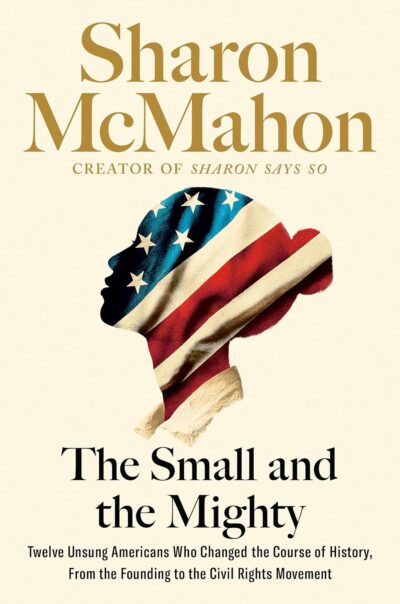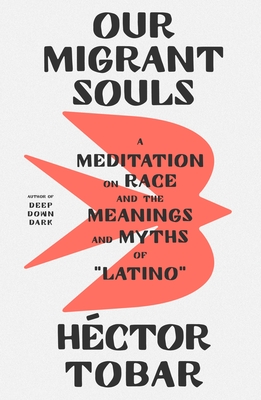435 Results with the "Biography" genre
Adventure Fiction (1164)
Business & Finance (1)
Children's Literature (124)
Comics (6)
Culture (51)
Drama (123)
Dystopian (29)
Fable (86)
Fantasy (1132)
Fantasy (203)
Fiction (1010)
Finance (1)
Gothic Fiction (12)
Historical Fiction (615)
History (122)
Horror (56)
Lifestyle (36)
Literary (404)
Literary Fiction (207)
Memoir (113)
Mystery (422)
Non-fiction (87)
Novel (549)
Paranormal Fiction (96)
Philosophical (182)
Philosophy (45)
Poetry (249)
Political Fiction (14)
Politics (42)
Practical (32)
Psychological (4)
Psychological Thriller (108)
Relationship (6)
Romance Novel (716)
Romantic Melodrama (14)
Satire (91)
Science (46)
Science Fiction (345)
Self-help (68)
Society (65)
Society (2)
Spiritual Growth (1)
story (2)
Thriller (704)
True Crime (56)
view (11)
Women's Fiction (2)
Young Adult (233)
-
 Chapter 4 explores the life and work of Virginia Randolph, an influential educator in 1890s Virginia. Standing at the back of a church, Virginia focused intently on the preacher's impassioned speech, calling for the improvement of African American education. Surrounded by parents eager to sign a petition for change, Virginia felt torn between her role as a teacher and her advocacy for better education. Her life was often seen as a balancing act, where she was viewed with suspicion by her peers yet…
Chapter 4 explores the life and work of Virginia Randolph, an influential educator in 1890s Virginia. Standing at the back of a church, Virginia focused intently on the preacher's impassioned speech, calling for the improvement of African American education. Surrounded by parents eager to sign a petition for change, Virginia felt torn between her role as a teacher and her advocacy for better education. Her life was often seen as a balancing act, where she was viewed with suspicion by her peers yet…-
123.9 K • Ongoing
-
-
Chapter
Chapter 4: SNCC
 Chapter 4: SNCC delves into the formation and early activities of the Student Nonviolent Coordinating Committee (SNCC), focusing on the pivotal role the organization played during the civil rights movement, especially in Nashville. The chapter begins by highlighting the success of the Nashville sit-ins, which were instrumental in the desegregation of local businesses. These protests not only advanced the cause of civil rights but also forged deeper connections among the activists, including John Lewis and…
Chapter 4: SNCC delves into the formation and early activities of the Student Nonviolent Coordinating Committee (SNCC), focusing on the pivotal role the organization played during the civil rights movement, especially in Nashville. The chapter begins by highlighting the success of the Nashville sit-ins, which were instrumental in the desegregation of local businesses. These protests not only advanced the cause of civil rights but also forged deeper connections among the activists, including John Lewis and…-
121.5 K • Ongoing
-
-
Chapter
Chapter 4: Cities
 Chapter 4: Cities provides an insightful examination of the racial and cultural evolution of Los Angeles, exploring how its complex history has shaped the city’s identity. The narrative begins by tracing the geographical and historical influences that have left their mark on Los Angeles, starting with the indigenous Tongva people, followed by Spanish and Mexican rule, and eventually the city’s annexation by the United States. This rich history plays a pivotal role in forming the racial classifications…
Chapter 4: Cities provides an insightful examination of the racial and cultural evolution of Los Angeles, exploring how its complex history has shaped the city’s identity. The narrative begins by tracing the geographical and historical influences that have left their mark on Los Angeles, starting with the indigenous Tongva people, followed by Spanish and Mexican rule, and eventually the city’s annexation by the United States. This rich history plays a pivotal role in forming the racial classifications…-
56.1 K • Ongoing
-
-
Chapter
Chapter 3: The Sit-Ins
 Chapter 3: The Sit-Ins explores the significant turning point in the Civil Rights Movement that unfolded through the sit-in protests in Nashville, beginning in early 1960. Prior to John Lewis’s return to Nashville in January, local ministers had attempted to challenge segregation at lunch counters but were consistently met with fierce resistance from the owners of department stores. Their efforts, although persistent, lacked the broader support and momentum needed to achieve meaningful change. However,…
Chapter 3: The Sit-Ins explores the significant turning point in the Civil Rights Movement that unfolded through the sit-in protests in Nashville, beginning in early 1960. Prior to John Lewis’s return to Nashville in January, local ministers had attempted to challenge segregation at lunch counters but were consistently met with fierce resistance from the owners of department stores. Their efforts, although persistent, lacked the broader support and momentum needed to achieve meaningful change. However,…-
121.5 K • Ongoing
-
-
 Chapter 3 delves into the incredible journey of Clara Brown, a woman who overcame immense adversity during the 1850s. Clara’s life was marked by the constant ache of separation from her daughter, Eliza, whose whereabouts she could never confirm. Living in Missouri and Kansas, Clara’s situation was compounded by the stark reality that, under the Dred Scott decision, she was not considered a U.S. citizen, further diminishing her rights. The emotional and legal barriers she faced were compounded by the…
Chapter 3 delves into the incredible journey of Clara Brown, a woman who overcame immense adversity during the 1850s. Clara’s life was marked by the constant ache of separation from her daughter, Eliza, whose whereabouts she could never confirm. Living in Missouri and Kansas, Clara’s situation was compounded by the stark reality that, under the Dred Scott decision, she was not considered a U.S. citizen, further diminishing her rights. The emotional and legal barriers she faced were compounded by the…-
123.9 K • Ongoing
-
-
Chapter
Chapter 3: Beginnings
 Chapter 3: Beginnings offers an insightful exploration into the lives of immigrants, delving into the stories that shape their experiences as they embark on new journeys in the United States. The chapter begins by reflecting on the personal and collective tales of migration, with many of these stories infused with hope, courage, and the excitement of starting afresh. For many migrants, the journey symbolizes a new beginning, yet the challenges that accompany these transitions are far from easy. The author…
Chapter 3: Beginnings offers an insightful exploration into the lives of immigrants, delving into the stories that shape their experiences as they embark on new journeys in the United States. The chapter begins by reflecting on the personal and collective tales of migration, with many of these stories infused with hope, courage, and the excitement of starting afresh. For many migrants, the journey symbolizes a new beginning, yet the challenges that accompany these transitions are far from easy. The author…-
56.1 K • Ongoing
-
-
Chapter
Chapter 28: Invictus
 In Chapter 28: Invictus, the profound efforts surrounding the memorial services for Congressman John Lewis are meticulously detailed, showcasing the dedication of those closest to him, especially his longtime aide, Michael Collins. Collins, having worked with Lewis for years, was tasked with leading the planning for his memorial, gathering a diverse group of people, including his congressional staff, close friends, and communications professionals. The memorial services were meticulously organized over the…
In Chapter 28: Invictus, the profound efforts surrounding the memorial services for Congressman John Lewis are meticulously detailed, showcasing the dedication of those closest to him, especially his longtime aide, Michael Collins. Collins, having worked with Lewis for years, was tasked with leading the planning for his memorial, gathering a diverse group of people, including his congressional staff, close friends, and communications professionals. The memorial services were meticulously organized over the…-
121.5 K • Ongoing
-
-
Chapter
Chapter 27: Lion in Winter
 Chapter 27: Lion in Winter depicts a poignant and deeply personal chapter in the life of Congressman John Lewis, exploring his battle with cancer and the unwavering dedication he exhibited to his work and ideals. The chapter highlights the enduring relationship between Lewis and his longtime aide, Michael Collins, who had been a pillar of support for two decades, managing not just his professional commitments but also offering vital personal assistance. As fall 2019 set in, Collins became increasingly…
Chapter 27: Lion in Winter depicts a poignant and deeply personal chapter in the life of Congressman John Lewis, exploring his battle with cancer and the unwavering dedication he exhibited to his work and ideals. The chapter highlights the enduring relationship between Lewis and his longtime aide, Michael Collins, who had been a pillar of support for two decades, managing not just his professional commitments but also offering vital personal assistance. As fall 2019 set in, Collins became increasingly…-
121.5 K • Ongoing
-
-
 Chapter 26 delves into the pivotal events of Montgomery, Alabama, shedding light on the broader civil rights movement that sought justice and equality. This chapter emphasizes that the struggle was not just about issues like bus integration or securing the right to vote; it encompassed a range of injustices that Black people endured daily, including racial violence. The story of Recy Taylor, a Black woman who was brutally assaulted by six white men in 1944, serves as a powerful anchor for the chapter.…
Chapter 26 delves into the pivotal events of Montgomery, Alabama, shedding light on the broader civil rights movement that sought justice and equality. This chapter emphasizes that the struggle was not just about issues like bus integration or securing the right to vote; it encompassed a range of injustices that Black people endured daily, including racial violence. The story of Recy Taylor, a Black woman who was brutally assaulted by six white men in 1944, serves as a powerful anchor for the chapter.…-
123.9 K • Ongoing
-
-
 In Chapter 26: Conscience of the Congress, the author reflects on the political turbulence at the end of Barack Obama's presidency. Although his administration had revived the economy and addressed key social issues like healthcare and LGBTQ+ rights, the nation was still grappling with racial tensions, ongoing gun violence, and an immigration crisis. John Lewis, a strong advocate for Obama during his presidential campaigns, found himself reflecting on his previous support. He had initially backed Obama…
In Chapter 26: Conscience of the Congress, the author reflects on the political turbulence at the end of Barack Obama's presidency. Although his administration had revived the economy and addressed key social issues like healthcare and LGBTQ+ rights, the nation was still grappling with racial tensions, ongoing gun violence, and an immigration crisis. John Lewis, a strong advocate for Obama during his presidential campaigns, found himself reflecting on his previous support. He had initially backed Obama…-
121.5 K • Ongoing
-
- Previous 1 … 25 26 27 … 44 Next
